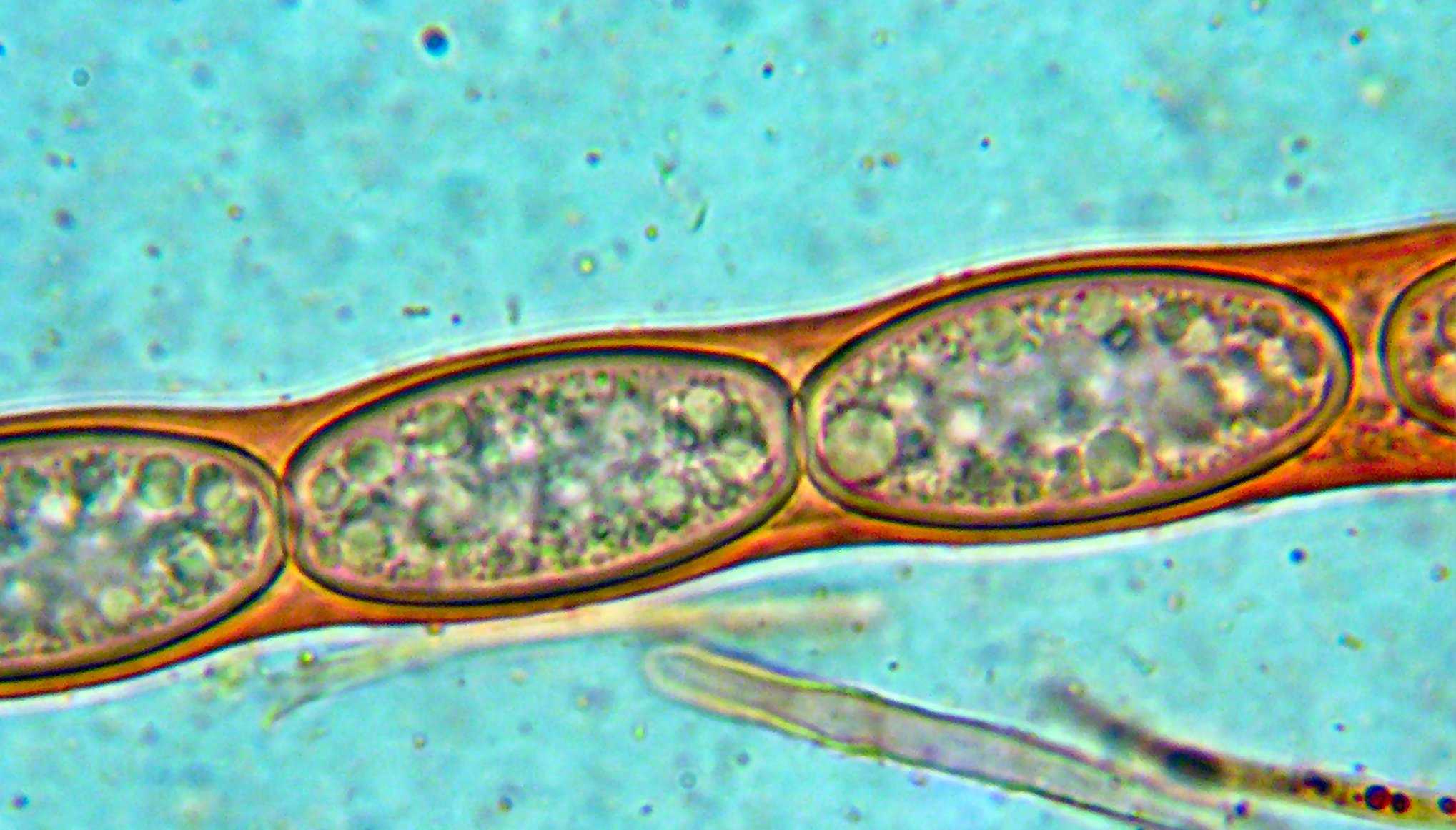FUNGAL FRIENDS GROUP NEWS |
(Member of the Fungus Conservation Trust - Registered Charity No. 1118651) |
ID WORKSHOP |
3. Sarcoscypha - an annoyance to grasp The Sarcoscypha problem is one that has niggled me for ages and has had me thinking am I right, wrong, right, wrong, clueless - ad infinatum. The Scarlet Elf Cup comes in what I thought was 2 species, namely Sarcoscypha austriaca and Sarcoscypha coccinea. There is a third to consider entitled Sarcoscypha jurana but seeing that this has only 2 questionable British records we may be safe to stick to the two main species. I will add a couple of lines about this third species at the latter end of this text. After finding some appropriate fruiting bodies it is straight to microscopy to make an identification. Firstly a sliver of the inner red cuticle is taken with a nice sharp scalpel, squashed beneath a cover slip with a drop of congo red added and placed under the lens of a good microscope to check the spores. After much discussion and investigation with a variety of bods this is what you should be looking for. Firstly, remember to check healthy free-floating spores or spores within the ascus. Immature or dead spores will only lead to confusion. Sarcoscypha coccinea will have 100% rounded ends to each and every spore no matter what position they are resting in. The spores will be multi-guttulate which means that within the spore there will be many equal sized oil drops except for around the central (median) area. This will be a good indicator of the species in question and that the spore is indeed 'alive'. The oil pattern in Sarcoscypha austriaca is similar to S. coccinea and has similar sized spores but if you check quite a few it will become apparent that in shape some are more flattened towards the end which is due to them laying in a different plane and exposing a saddle-shaped depression. So, on further inspection, if some spores have flattened ends and some spores have rounded ends you are looking at S. austriaca.
Fig 1 - Note the small oil drops fill the entire spore of S. austriaca What we are looking for here are some tiny microscopic (excipular) hairs that are spirally coiled in S. austriaca and more or less straight or slightly curved in S. coccinea. This however is up for debate as Tony Carter of the North West Fungus Group has thrown a spanner in the works after finding both types of hair growth on one specimen. An aberration perhaps but worth noting. Macroscopically there is nothing to work with so these microscopic pointers are essential in determining your specimen unless of course you are happy with the tag Scarlet Elf Cup sp. Harking back to S. Jurana it is more spore investigation I'm afraid and what to look out for here is a bi-guttulate appearance which means that there will be two large oil drops at either end of the spore. Apparently the specimens need to be fresh again as older specimens of austriaca and coccinea may see the smaller oil drops come together and form two similar larger drops to those found in jurana. It all adds to the mystery and problems. Maybe perhaps in a few years I will be adding a footnote to this information and stating that all species have been lumped together and there is just good old Scarlet Elf Cup (Sarcoscypha whatever). I personally wouldn't complain - then again I may think differently if further splits take place. In fact did I add the bit about there being a rumour that possibly 7 species of Sarcoscypha could be found in Britain. No - well best not bother anyway hey? |
